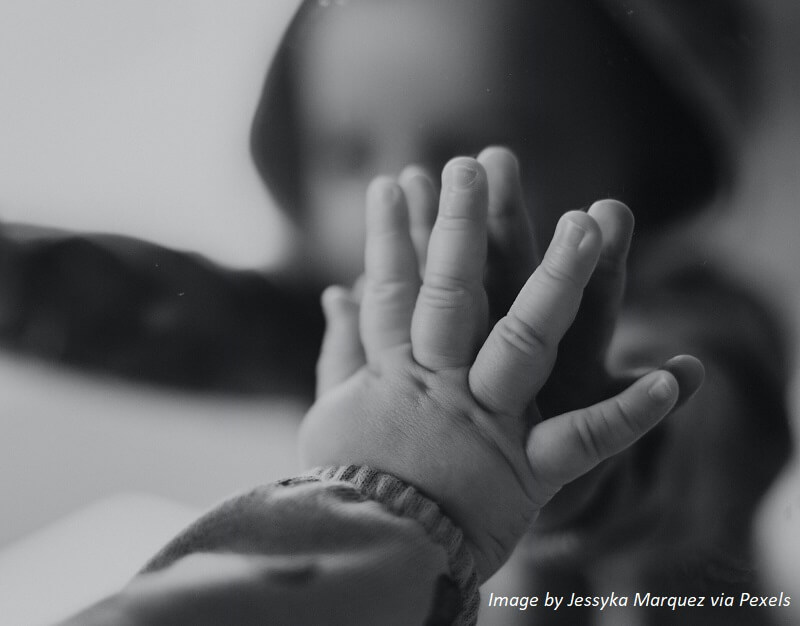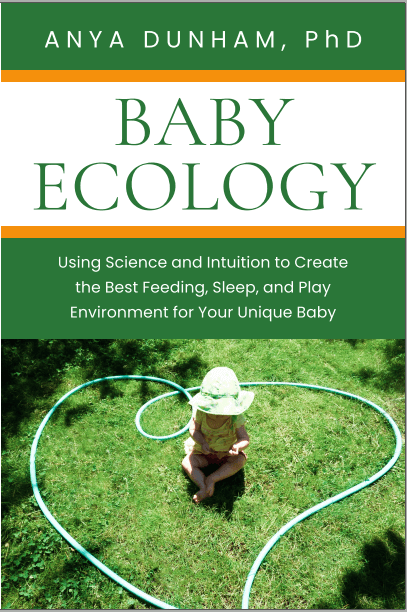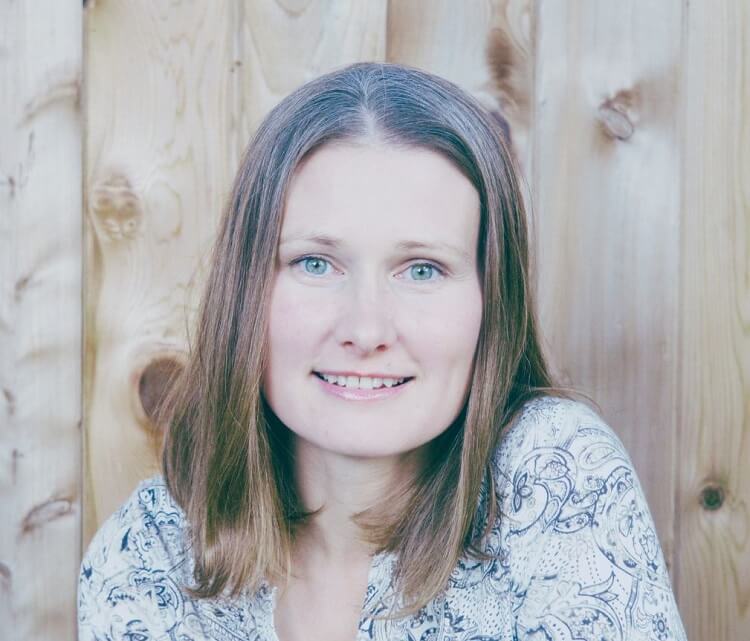Baby Ecology book is here! Learn more
Baby Ecology book is here!
- Home
- Baby activities
- Mirrors in baby's playroom
Mirror in playroom: Are mirrors necessary for babies?
by Anya Dunham, PhD
Some educational philosophies, such as Montessori, recommend having a mirror in playroom for babies and toddlers. Others, like RIE, discourage the use of mirrors. Let's see what science says.

Are mirrors necessary or beneficial for babies? Should your baby have one? Some educational philosophies, such as Montessori, recommend having a mirror in baby’s playroom (for example, here's an article on mirrors for babies by How We Montessori). Others, like RIE, discourage the use of mirrors (listen to Janet Lansbury touch upon Magda Gerber's view on mirrors in this episode of Unruffled) . Let's take a look at what science says.
You might want to add a mirror to a baby’s play space for several reasons: for example, to encourage movement or interaction with the reflection, to add visual interest or a sense of space to the room, to expand the repertoire of activities, or to help your baby begin recognizing themselves. Here, I will focus on the latter: Are mirrors necessary for the baby to understand the concept of “self”?
The mirror test
No direct test can tell us with full certainty when babies begin to recognize “This is me!”. The way scientists typically test self-recognition ability is the “rouge test”, or Gallup’s mirror test1,2: will the child whose nose has been discreetly marked with rouge try to wipe it off when they see their reflection in the mirror? Typically developing Western children who see mirrors in everyday life begin doing this between 15 and 24 months.3-5
What if the child hasn't been exposed to mirrors?
Interestingly, toddlers who have not had any experience with mirrors (for example, those from nomadic Bedouin families or whose parents deliberately kept mirrors away) still tend to pass the rouge test, either right away or after a brief exploration of the mirror.6,7 What’s more, several animal species can pass the test as long as they've had prior experience with reflective surfaces: chimps, orangutans, dolphins, and Asian elephants.8
This suggests that mirror self-recognition is likely more of a practical skill than an indicator of a sense of self.9
Is mirror recognition a meaningful milestone?
It was previously believed that mirror recognition was a milestone to be achieved before children can feel and express concern for others. But recent work is beginning to show that even at 3 months (!), babies can become concerned about, and explore, others’ distress.10 Concern for others begins early, much before the baby can begin to master the practical skill of mirror recognition.
📌 Mirror in playroom: the bottom line
Having a dedicated mirror for babies and toddlers doesn’t appear to speed up self-recognition or a sense of self vs others. Babies are wired to move, explore, connect, and care for others, with or without the mirrors.
Using a mirror in playroom at home and in group care settings
If you decide to add a mirror to your baby's or toddler's play space, consider your child's age in where you place the mirror.
- Unless the mirror is soft and meant to be held by the child, it should be securely attached to the wall or another solid surface.
- If you have a mobile baby or a toddler, place the mirror away from any climbing structures or areas your baby might practice climbing or balancing (like a couch): suddenly seeing their reflection in the middle of a climbing act might confuse your child and throw them off-balance.
If you are an Early Childhood Educator working in an Infant room, it might be best to not place mirrors in busy areas. Babies might find it overstimulating to simultaneously see reflections of themselves and multiple other children that are appear to be moving in different directions all at once.

References
References
1. Gallup GG Jr (1970) Chimpanzees: Self-recognition. Science 167; 86–87
2. Gallup GG Jr (1979) Self-recognition in chimpanzees and man: A developmental and comparative perspective. In M. Lewis & L. A. Rosenblum (Eds.), The child and its family (pp. 107–126). New York: Plenum Press
3. Amsterdam B. (1972) Mirror self-image reactions before age two. Developmental Psychobiology 5: 297–305
4. Bertenthal BI, Fischer KW (1978) Development of self-recognition in infants. Developmental Psychology 4: 44–50
5. Nielsen M, Dissanayake C, Kashima Y (2003) A longitudinal investigation of self-other discrimination and the emergence of mirror self-recognition. Infant Behavior and Development 26(2): 213-226
6. Priel B, deSchonen S (1986) Self-recognition: A study of a population without mirrors. Journal of Experimental Child Psychology 41(2): 237-250
7. Rochat P, Zahavi D (2011) The uncanny mirror: a re-framing of mirror self-experience. Consciousness and Cognition 20: 204–213
8. For references on non-human species that pass the rouge test, see (Gallup, 1982; Plotnik & de Waal, 2006; Povinelli, 1995; Reiss & Marino, 1998) cited in: Broesch T et al (2011) Cultural variations in children’s mirror self-recognition. Journal of Cross-Cultural Psychology 42(6): 1018–1029
9. Brandl JL (2018) The puzzle of mirror self-recognition. Phenomenology and the Cognitive Sciences 17: 279–304
10. Davidov M et al (2021) Caring babies: Concern for others in distress during infancy. Developmental Science: 24(2):e13016
Using hundreds of scientific studies, Baby Ecology connects the dots to help you create the best environment for sleep, feeding, care, and play for your baby.
Warmly,
Anya


